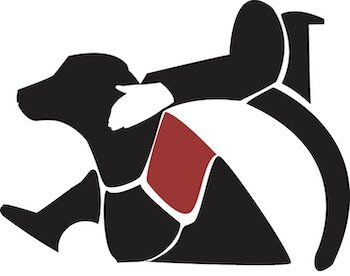Volunteer Opportunities
SDV would not be able to continue our mission without our dedicated group of volunteers. We welcome all levels of involvement and work hard to provide our volunteers with a unique and fulfilling experience. Apply now or explore our opportunities below to learn more about how you can make an impact.
Facility VolunteerS
We are temporarily not accepting applications for facility volunteers. Thank you for your interest, and please check back with us soon!
Don’t think volunteering is right for you? Listen to SDV Volunteer Beth and learn why she gives her time to help these dogs become future service dogs or read “Volunteer Mythbusters”
All volunteers must attend SDV’s volunteer class. Once you submit your Volunteer Application, you can sign up for a class. Generally, classes are held either on a weeknight at 5:30 or 6:00 pm, or on the weekend. You must be at least 18 years of age to handle a service dog in training.
General Questions
-
Yes! The vast majority of our volunteers have no formal dog training experience. Before fostering a dog, you must attend a Volunteer Training Class. During this class you will learn our training methods and how to handle the dog in public and cues that the dos are learning.
Our training methods are based on positive reinforcement, and we know you will truly enjoy the experience. -
A fenced yard is highly desirable. We will, however, make exceptions on a case-by-case basis if you are willing and committed to leash walking the dog on a regular basis. Please note: Electric or invisible fences are not permitted.
-
Generally, yes. Program dogs are not allowed to cross state lines without permission, and are never allowed to cross international borders. They are not allowed on cruises or on a flight while in training.xt goes here
-
In general, dogs in vest should build the expectation of not greeting people, including friends, family, neighbors or coworkers. If the program dog is out of vest, enjoying "down time," and are being well-behaved, they may meet and greet people. Please make sure anyone greeting the dog is aware of program rules and that you are ready to help enforce good manners.
-
Anyone who helps care for the service dog in training must meet and be approved by SDV. They should also join you in classes to make sure they understand Program expectation.
-
Usually another volunteer will take care of your dog while you are on vacation or need a break. We like our puppies to become accustomed to new experiences and occasionally will ask foster homes to exchange puppies for a week or two.
-
Yes. Considering the investment of emotion, time, and energy in raising a service dog puppy, the entire family needs to be in favor of taking on this commitment. Family members may participate in the training process; however, one family member should be designated as the primary trainer. Those aged 18 and younger may be allowed to handle the dog with SDV approval.
-
We use primarily Labrador Retrievers in our program due to their size, natural retrieving instinct, and their strong desire to work for and please people. From time to time we will accept a dog deemed unsuitable for guide work and given to us by a guide dog organization which could be a Golden Retriever or a Golden/Lab cross.
-
Nights and weekends volunteer typically have the dog for one year. Depending on the dog’s training, abilities, and when a placement can be made, dogs may be 2.5 years old. If you are not able to house a dog for its entire advanced training period, we will consider a placing a dog for a shorter period (minimum of three months required).
-
A martingale collar,leash, training vest, and a small crate for crate training, food, all medical expenses, ID microchips, medications (including flea and tick preventatives), and insurance.
-
A fenced yard or commitment to leash walking on a regular basis
Approved dog toys and treats
Dog bed
Transportation to/from SDV facility
Plenty of love and attention
-
We wait to spay/neuter until at least 1 year of age in order to determine if a puppy is going to enter our breeding program. This is why we require all pet dogs in volunteers’ homes to be spayed/neutered. Unspayed female dogs typically go into heat 1-2 times a year, starting sometime between 6 months and 1 year of age. During this time, you may want to have her wear a protective liner.
-
Yes, you will have the opportunity to meet the individual who receives the dog you fostered. Applicants for service dogs complete two weeks of team training with their potential service dog followed by a graduation ceremony held in December each year.
-
Sometimes dogs in training cannot be placed as a service dog due to reasons such as health or temperament that don’t meet the qualifications for this type of work. In the event that a dog needs a career change, we evaluate the situation and determine what is best for the dog.
-
It’s only natural that you will become very attached to the dog. The ability to give up a dog comes from knowing that you are raising this puppy or providing nights/weekends care or a purpose — that the puppy will go on to help someone with a disability lead a more social and independent lifestyle. Plus, when you are ready we’ll have another dog for you!
-
Yes. We have our graduation each November (typically the weekend before Thanksgiving) and our skills demo in the spring. All dogs in training are present at the graduation and you may be asked to bring your dog to the skills demo.
We may also ask you to help out a fundraising or other event.







